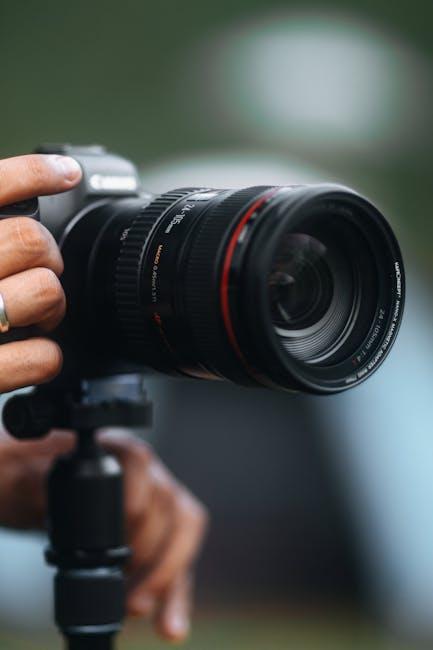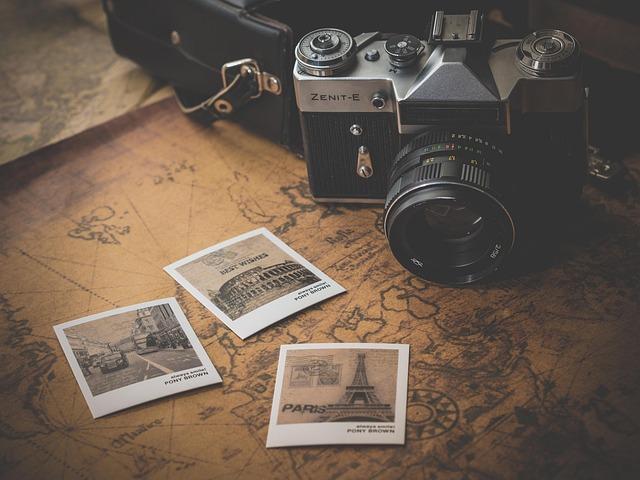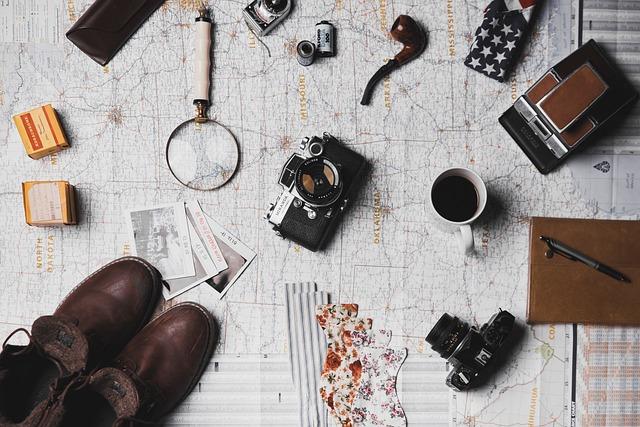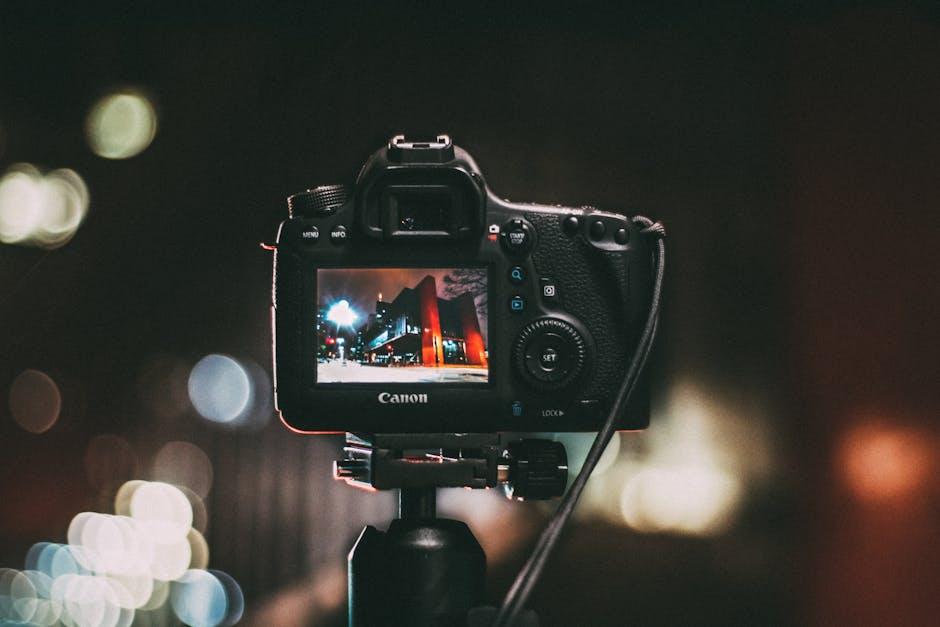In a world where wanderlust meets the convenience of technology, the compact travel camera emerges as a quintessential companion for explorers and enthusiasts alike. As the landscapes we traverse become ever more breathtaking, the challenge lies not only in capturing these moments but also in choosing the right equipment to do so. In this review, we delve into the intricate balance between quality and portability, examining how various compact cameras measure up to the demands of diverse travel scenarios. From bustling city streets to serene natural vistas, we assess the features, performance, and practicality of these devices, helping you navigate the decision of taking the perfect snapshot without the burden of cumbersome gear. Join us as we explore the captivating world of compact travel cameras, where every pixel counts and every ounce matters.
Understanding the Balance Between Image Quality and Size
When evaluating compact travel cameras, it’s essential to find a harmonious equilibrium between image quality and portability. on one hand, high-resolution sensors and advanced optics are pivotal for capturing stunning images, especially when traveling to picturesque locations.On the other, the size and weight of these cameras can substantially impact your travel experience. To help navigate this balance, consider the following key factors:
- Sensor Size: larger sensors generally produce better image quality, especially in low light conditions. Tho, compact cameras with smaller sensors can still deliver extraordinary results if used correctly.
- Lens Aperture: A camera with a fast lens (low f-number) can frequently enough outperform its peers in challenging lighting, enabling grate shots without the bulk of a larger camera.
- RAW vs. JPEG: Shooting in RAW format preserves more image data, allowing for extensive post-processing, yet results in larger file sizes which may limit storage while traveling.
- Interchangeable Lenses: Some compact models offer this feature, giving versatility in capturing various scenes while maintaining a manageable form factor.
When analyzing image quality and size, remember that newer technologies like image stabilization and noise reduction algorithms can further enhance the photography experience without hefty gear. Compact cameras are continually evolving, offering advanced features while remaining lightweight. It’s worthwhile to explore the following:
| Camera Model | Megapixels | Weight (g) | Sensor size |
|---|---|---|---|
| Camera A | 20 | 300 | 1-inch |
| Camera B | 16 | 250 | Micro four Thirds |
| Camera C | 24 | 400 | APS-C |

Key Features That Enhance travel Photography
When selecting a compact travel camera,several features can significantly enhance your photography experience,making it easier to capture stunning images on the go. Image stabilization technology is crucial, especially for handheld shots in low light or moving situations. Cameras equipped with fast autofocus systems can definitely help you quickly focus on fleeting moments—perfect for capturing candid street scenes or wildlife. Additionally, a high dynamic range (HDR) mode can definitely help you take balanced photos in challenging lighting conditions, ensuring that both shadows and highlights are well-represented.
Another valuable aspect to consider is the camera’s wireless connectivity options.Wi-Fi or Bluetooth capabilities allow you to easily transfer photos to your smartphone or tablet for immediate sharing on social media. A camera with varying shooting modes gives you flexibility in capturing different environments,from landscapes to portraits. Lastly, weather sealing can be a real lifesaver, enabling you to shoot in diverse conditions without worrying about dust or moisture damaging your gear. Below is a simple comparison of essential features in popular compact travel cameras:
| Camera Model | Image Stabilization | Fast Autofocus | HDR Mode | Wi-Fi Connectivity |
|---|---|---|---|---|
| Camera A | Yes | Yes | yes | Yes |
| Camera B | No | Yes | No | Yes |
| Camera C | Yes | No | Yes | No |

Top Compact Cameras for Every Budget and Need
when selecting a compact camera, understanding the balance between quality and portability is paramount.A plethora of options are available across various price points to satisfy those who seek sleek designs without compromising image quality. For instance, entry-level models like the Canon PowerShot G9 X Mark II excel in portability and ease of use, featuring a 20.1 MP sensor and an ultra-slim body that fits easily into a pocket. Conversely, enthusiasts may consider the Sony RX100 VII, which combines a powerful 1-inch sensor with a versatile zoom range, ensuring stunning shots whether your capturing a landscape or a close-up.
For those on a budget, numerous affordable yet reliable options exist. Models such as the Nikon Coolpix A1000 or the Fujifilm FinePix XP140 provide commendable image quality and unique features, such as built-in Wi-Fi for easy sharing or waterproof capabilities for adventurous souls. To facilitate comparisons, here’s a simple table highlighting some standout features across varying price ranges:
| Camera Model | Megapixels | Zoom | Price Range |
|---|---|---|---|
| Canon PowerShot G9 X Mark II | 20.1 | 3x | $$ |
| Sony RX100 VII | 20.1 | 8x | $$$ |
| Nikon Coolpix A1000 | 16 | 35x | $ |
| Fujifilm FinePix XP140 | 16.4 | 5x | $ |

Tips for Choosing the Right Camera for Your Adventures
Choosing the perfect camera for your outdoor excursions requires a careful balance of features that suit your adventurous spirit while maintaining convenience. When evaluating travel cameras, prioritize factors that align with your photography needs. Consider the following aspects:
- Size and Weight: Look for compact models that easily fit in your backpack or pocket.
- Durability: Ensure your camera can withstand the rigors of travel, including weather and environmental conditions.
- Image Quality: Check for sensor size and lens capabilities that deliver high-resolution images even in challenging lighting.
- Battery Life: Opt for cameras with longer battery life, so you’re not constantly recharging during your adventures.
Another key consideration is the versatility offered by specific camera models. A camera with interchangeable lenses can adapt to various shooting scenarios, while an all-in-one zoom lens provides convenience on the go. Don’t forget to evaluate:
- Zoom Range: Look for a camera offering a decent zoom to capture distant subjects without sacrificing quality.
- Connectivity Features: Wi-Fi and Bluetooth capabilities can help with quickly sharing your travel memories.
- Control Options: Familiarize yourself with manual settings versus automatic modes, depending on your skill level.
In Retrospect
In the ever-evolving world of travel photography, the delicate balance between quality and portability remains a captivating challenge.As we’ve explored the nuances of compact travel cameras,from the meticulous craftsmanship of high-end models to the convenience of pocket-sized solutions,it’s clear that every traveler’s needs are unique. Whether you’re a leisurely sightseer or an adventurous explorer, the right camera can unlock a treasure trove of memories just waiting to be captured.
We’ve delved into a spectrum of options, analyzing how each model performs in different settings and under varying conditions. With the right knowledge, you are now better equipped to make an informed choice that aligns with your travel style. Choosing between quality or portability doesn’t have to feel like an impossible decision; rather, it can be an exciting possibility to find a camera that complements your journey.
As you prepare for your next adventure, remember that the most vital thing is not just the gear you carry, but the stories you’ll tell through the images you create. May your future travels be filled with breathtaking vistas, cherished moments, and the perfect camera by your side, ready to capture it all—because every trip deserves to be remembered. Safe travels, and happy shooting!



